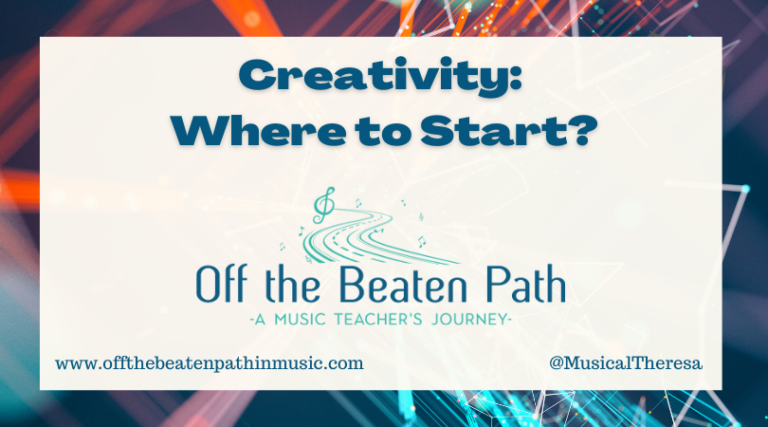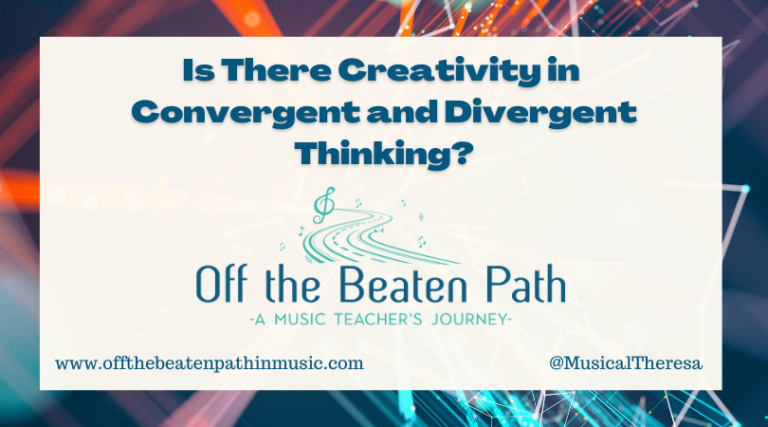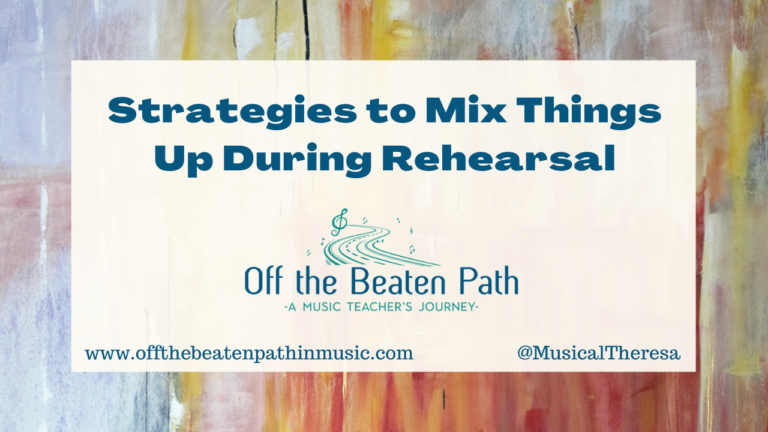What’s the Role of the Creative Process in Music?
When looking at creativity, there are differences in opinion on where the creativity comes from. Scholars vary on whether they believe it’s the person, process, product, or place that determines if creativity exists. This blog post will focus on things surrounding the creative process in music.

If you had asked me four months ago if I thought there was a creative process, I would have answered “yes” without hesitation. This was something I took as fact, as I’m sure many others do as well. However, after this semester, I now recognize that the question is not as simple as I originally thought. There may be a creative process, but it’s likely different for everyone. And, this “process” might not be a sequential, step-by-step occurrence.
The Four Stages
You may remember Graham Wallace, who I wrote about in What Does it Mean to Be Creative? Wallas was one of the first social psychologists to believe people controlled their thoughts. In 1926, he published a book that included his stages of controlled thought: preparation, incubation, illumination, and verification. Over the years, many scholars have connected these stages to creative thinking, which makes sense! I’m sure I’m not the only one who can think of a time they experienced this process in their own lives. But what Wallace didn’t account for is the fact that creativity is messy, and doesn’t always occur linearly.
Over fifty years later, Peter Webster, a current Scholar in Residence at the University of Southern California, Thornton School of Music, built upon Wallas’ model to create his own four stages of creative thinking. The biggest difference between the two models is that Webster believed after creating the product, in the verification stage, people could move back to the beginning (preparation) to make revisions while going through the stages again. Webster recognized that creativity doesn’t always happen in a straight line, and revision is often part of the process! What’s also interesting about Webster’s model is that he expanded it beyond the four stages to include divergent and convergent thinking, enabling skills and conditions, along with a slew of additional details. (You may also remember reading in What Does It Mean to Be Creative about divergent and convergent thinking as part of J. P. Guilford’s work studying the creative person!) To learn more about Webster and his model of creative thinking, check out this article, Creativity as Creative Thinking along with his Model of Creative Thinking Process in Music.
Where Does Revision Fit?
While logical, this idea of revision brings up an interesting question. Do young children revise their creative work? There seems to be some mild disagreement in music education, and it exists for a reason. In his work, Peter Webster often found that once a young child determined their piece of creative work was finished, they were not interested in making revisions to the work and they did not welcome suggestions to do so. I’ve noticed this happen in my teaching as well. Students are more likely to start a new project than change one they deemed “done.” However, to contrast that, Jackie Wiggins, Distinguished Professor Emerita in the School of Music, Theatre and Dance at Oakland University, believes there is potential for revision in the creative work of children. One method is to provide students with feedback throughout the creative process and not only when the student feels their work is completed. Wiggins also believes that the classroom environment plays a role in a student’s willingness to revise their work, and if the teacher has established a “community of collaborative learners,” students will recognize comments and feedback as something that naturally occurs in the music classroom. To learn more about Jackie Wiggins and Peter Webster’s ideas on revision, check out this article: Fostering Revision and Extension in Student Composition.
Sandra Stauffer, Vice Dean and Professor at Arizona State University, has found in her work that young children will often revise their creative pieces by repeating them – going forwards instead of backwards. Children get better at something by doing it over again, elaborating each time, instead of going back and fixing what they have already done. It’s not until students around the age of ten that they begin revising their work. This is similar to their experience in writing.
What Does It Mean?
So what does this mean for music teachers? While there may not be a neat and tidy, step-by-step creative process, there are things we can think about when engaging students in creative activities.
- Encourage divergent thinking, especially at the beginning of a creative activity, to engage students in finding multiple ways to solve a problem or complete a creative task.
- Create a supportive, collaborative environment, where students are encouraged to share their thoughts and ideas throughout the learning and music-making experience.
- Provide frequent opportunities for students to create and a variety of different ways for students to create.
- Encourage students to elaborate on their creative ideas, creating new pieces of work if that suits them, recognizing that for many students, these new creations are part of their process.
- For older students, encourage them to reflect on their own creative processes. What steps did they take? Were they open to feedback? Did they make revisions along the way?
The moral of the story is that creativity is messy! That’s what makes it beautiful. Provide students of all ages with opportunities to be creative and enjoy the results.
If you are looking for other ideas about creativity, check out these past blog posts:






